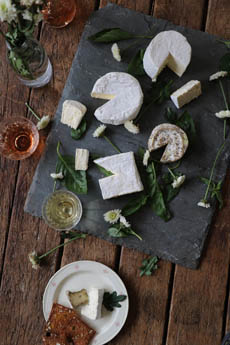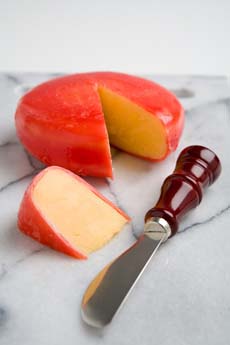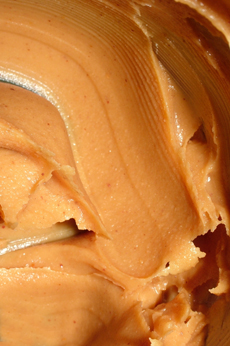


[1] EAT ME! Cheeses with bloomy white rinds like Brie, Camembert and triple-crèmes are delicious (photo courtesy Murray’s Cheese). [2] COOK WITH ME! Rinds from aged hard cheeses like this Parmigiano-Romano can be tossed into soups and stews (photo courtesy Whole Foods Market). [3] TOSS ME: Waxed rinds are not edible (photo © Karcich | Dreamstime).
|
|
Recently we were at a professional wine event, and some fine cheeses were being served.
We were dismayed to note that most people had scooped out the soft, runny centers of the bloomy rind cheeses, leaving the white rinds as ghostly shells.
Cheese fans: The soft, white bloomy rinds are meant to be eaten. If you’ve been cutting them away, try them while they’re still pure and white. Connoisseurs consider them part of the unique character of the cheese, and will eat them even as they age and lose their pure white appeal.
You’ll find bloomy rind cheeses made from cow’s milk, goat’s milk and sheep’s milk, although the most famous happen to be from cow’s milk and are also two of the most popular cheeses in the world, Brie and Camembert. Other bloomy-rinded favorites include triple crèmes such as Brillat-Savarin, Saint-Andre and Pierre Robert. (See the Glossary Of Cheese Terms in the Cheese Section of THE NIBBLE online magazine for more information.)
Other wines can be eaten, too. As long as the rind is soft, from a semisoft cheese, it is edible and quite tasty, too, with mushroom accents.
People are either rind-lovers or not; few are on the fence. But there’s no harm in trying a bite. After all, it’s that soft rind that enabled the cheese to develop its lovely flavors.
Beyond white rinds of Brie, Camembert and triple-crème cheeses, the gray or yellow rinds of many other soft or semisoft cheeses deserve a taste. (think Brie or Taleggio) are edible and often have a pungent, mushroomy flavor.
Even if it looks questionable to your eye, give it a try. If the cheese is good, so is the rind. You may find that a little rind complements the cheese and enhances its flavor. But if it’s strong or bitter. pass it up and try the next rind..
WHAT ABOUT HARDER RINDS?
Some people chew on the rinds of aged cheese, as long as it’s not covered in wax, which is inedible.
If that doesn’t appeal to you, remember this kitchen trick: Toss the rind it in a pot of soup to add extra flavor (remove it before serving). The earthy rinds of hard aged cheeses like Parmesan and Pecorino have been used this way since…the beginning of aged cheese!
MORE ABOUT BLOOMY-RIND CHEESES
Brie and Camembert are essentially the same cheese made in different locations and in different sizes.
Camembert, named after its village in northwest France, is made in 4.5-inch wheels and Brie, named for the province in northern France where it originated, is made in 11- to 11.8-inch wheels [although “baby Bries” are now made as well]. Read our full article on the difference between Brie and Camembert.)/
The bloomy rind category of cheese refers to those cheeses with snowy white, downy rinds and soft, creamy interiors.
Bloomy rind, also called white rind or soft-ripened cheese, is one of the major categories of cheese. Along with the fresh (un-aged) cheeses, it comprises the soft cheese category.
The bloomy rind is composed of one of the greatest cheese molds, Penicillium candidum, which grows naturally as the cheese ages. The rind is produced by spraying the surface of the cheese with Penicillium candidum before the brief aging period (about two weeks). The mold grows on the outside of the cheese, breaking down the protein and fat inside, making it soft, runny and more complex.
CHECK OUT ALL THE DIFFERENT TYPES OF CHEESE IN OUR CHEESE GLOSSARY.
|






